Just like the forcibly stretched grins of its inhabitants, the joy found in We Happy Few is a facade. The game’s fascinating setting of a drug-fueled society wasting away in fake happiness is squandered on repetitive environments, poorly paced and downright boring quest designs, and a variety of confusing mechanics that never find harmony with each other. Its three individual tales of survival manage to deliver some surprisingly poignant moments, but We Happy Few does its best to dissuade you from wanting to play long enough to see them through.
We Happy Few takes place in a timeline where Germany reigned victorious after World War II and has England bowing to their whims. Children are sent to the German mainland without reason, and the quiet town of Wellington Wells is plunged into a drug-induced mirage of peaceful, happy co-existence. With pills called „Joy“ helping citizens forget the atrocities of the past, uprising is far less likely. But this fake sense of tranquility brings about its own problems. Citizens refusing to live under Joy’s medicinal spell are outcast to the borders of city, forced to live in decrepit, crumbling houses while they wait to starve to death. The citizens of Wellington Wells are always happy to see you, but only if you abide by their rules.

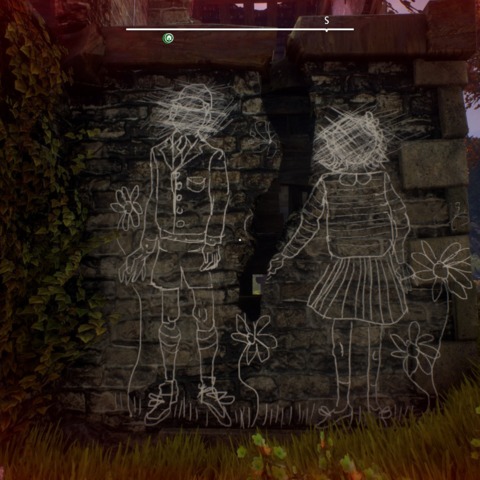








Enter Arthur, Sally and Ollie–the three characters you’ll control throughout three acts that show all sides of this horrific society. Arthur suffers from post-traumatic stress, reliving the moments where he lost his brother to the German kidnappings. Sally hides a secret within the walls of Wellington Wells while also providing black market drugs to those who pay enough. Ollie is just a confused war veteran, disturbed by events of the past that have shaped his future. The more personal aspects of each character end up being more interesting than the mythos surrounding them. Each new perspective lends context to previously puzzling interactions to create clever „aha“ moments, and the stories have powerful themes of abandonment, parental sacrifice, and overbearing guilt. Each finds a satisfying (if not always happy) end to their journey, despite the mechanics fighting actively against you reaching their climax.
In Early Access (where the game sat for nearly two years), We Happy Few was a survival game. That’s mostly stayed the same, despite the structure of its design changing around it. As any character, you’ll need to manage meters for hunger, thirst, tiredness, and more (Ollie actually needs to watch his blood sugar, of all things), which impose penalties and buffs on your fighting and movement abilities. Early on, managing these statuses is difficult, with a scarcity of resources while you’re still coming to grips with We Happy Few’s many rules. But they soon end up being just frustrating. The resources to replenish them aren’t hard to find, but constantly having to tend to them when you’re just wanting to get along with the story is arduous.
There is an unbelievable number of items to pick up and carry in We Happy Few, but only a small handful end up being useful. You’ll frequently be forced to pick up flowers to craft healing balms or bobby pins for lockpicks, for example. But vials of toxins that can knock out or kill enemies don’t give you a reason to choose one or the other. The crafting menus for each character change based on their abilities, but the core items that are shared between all three are likely the only ones you’ll actually utilize–the specialized items hardly necessitate their complex requirements. It feels like such a waste having a vast crafting system attached to a game that never puts you in a situation where it feels necessary. We Happy Few has many ideas strewn across its menus but nothing mechanically that requires their use.
This frustration is only exacerbated by the lack of interesting quests to undertake in We Happy Few’s relatively large open world. Its inhabitants treat you as their delivery boy, never giving you anything more complex than walking to an area, picking something up, and walking all the way back. Quest design works counterintuitively to the idea of having to scrounge to survive. Even if you wanted to reach into the world’s nooks and crannies to find something interesting, inquisitive eyes are rarely met with any rewards aside from the plethora of items you probably already have stashed in your inventory. There’s a point in Arthur’s story where he exclaims, after a multi-staged questline, „All that, just to reboot a bridge?“ and it feels like he’s crying out for help from you directly.
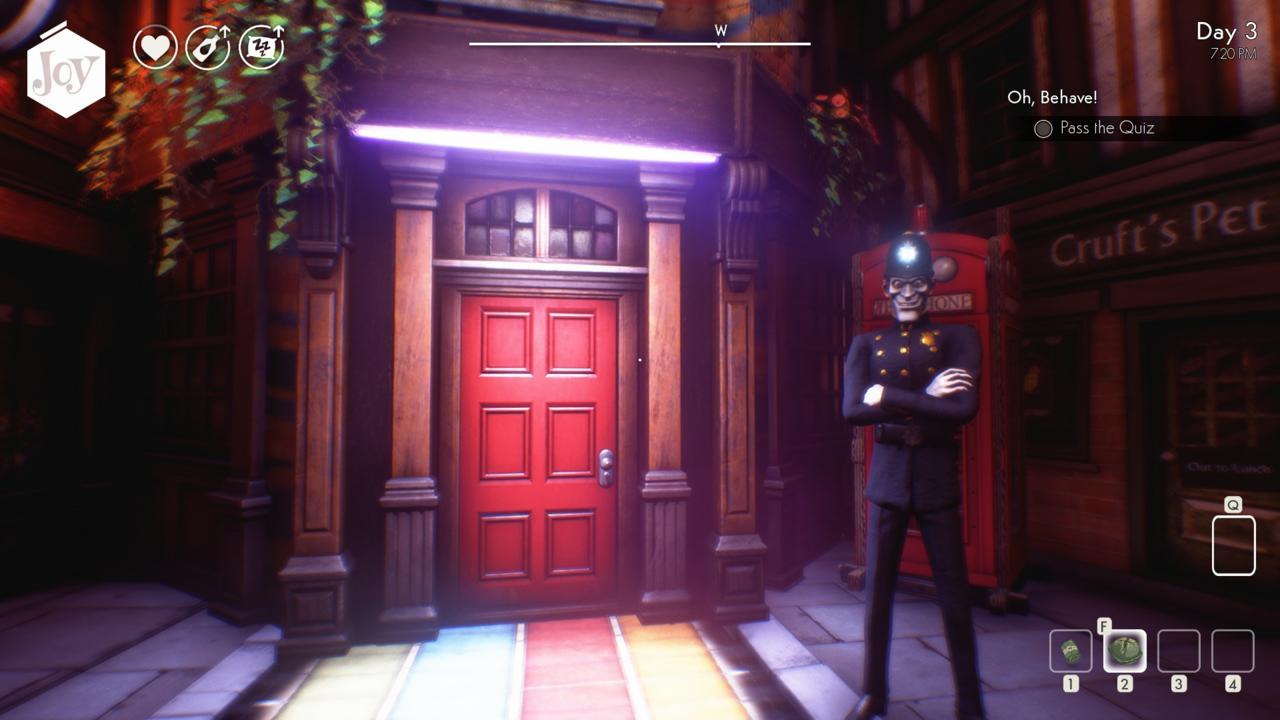
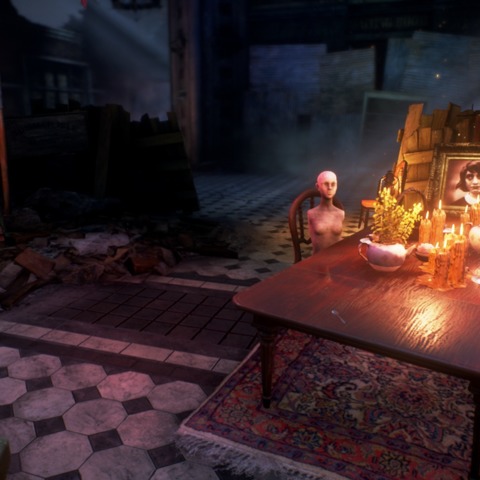
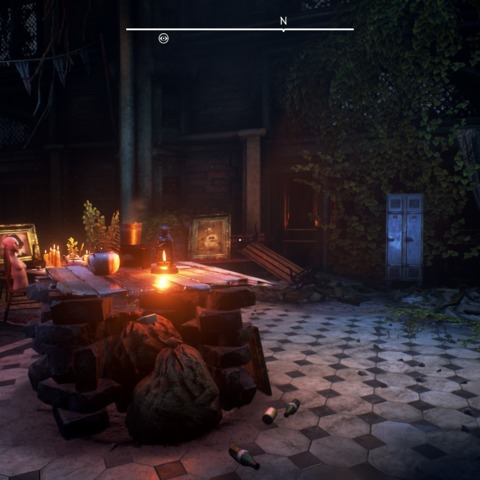








What attempts to break up this straightforward structure are the rules of Wellington Wells. Outside of its walls you’ll be forced to don tattered clothing to fit in with the rest of the depressing crowd, as well as fighting off temptations to steal from their strewn-about dwellings. Inside is another story entirely. The inhabitants of Joy-infested cities will be quick to throw up arms should you do anything but walk. Haunting guards and eerie Joy-sniffing doctors pose a threat to your blending in, which can force you to pop some pills from time to time. Their effects keep you hidden for a time but have devastating withdrawal symptoms that prevent you from masking your depression, which can have an entire city on your tail in mere seconds.
The setting sounds intriguing on paper: a system where stealth is managed by social interactions and conformity. But its execution is lacking. Obeying the strictly imposed rules is trivial and only slows down your progress towards the next quest marker, negating any sense of tension they might have imposed. Outside, the rules are looser, but there’s also far less to look at. You’ll spend a lot of time simply sprinting through empty fields with no discernable landmarks, only to be greeted by another bridge into another strict state that brings progress to a crawl. It’s a disappointing misuse of a system that might have otherwise been engrossing.
It feels like We Happy Few understands many of its mechanics are a chore to begin with.
The character progression system is even more underdeveloped. While each of the three characters has some unique characteristics, the abilities you’re able to purchase are largely shared between them, and many give you ways to turn some of We Happy Few’s rules off entirely. One allows you to sprint through cities without rousing alarm for example, while another lets you ignore annoying night curfews entirely. It feels like a concession–like We Happy Few understands many of its mechanics are a chore to begin with.
When rules aren’t being (mercifully) stripped away, they often just don’t work. The night curfew, for example, will have guards turn hostile should they spot you. But conceal yourself on a bench, and they inexplicably ignore you entirely. Melee combat is monotone and predictably boils down to you exhausting your stamina swinging your weapon and then simply blocking until it recharges. When you’re not being forced to contend with that, you’ll be sneaking around enemies with a barely functioning stealth system. Enemies are inconsistent in their ability to spot you, sometimes walking across your path without a whiff of suspicion. Their patrol lines are easy to spot and never deviate, making the reward of a successful infiltration feel remarkably hollow. Most times they’re just far too predictable. They’ll stare for extended periods at distractions you conjure and fail to search an area after spotting you briefly. We Happy Few’s stealth is so transparently binary that it just feels like you’re cheating the system most of the time.
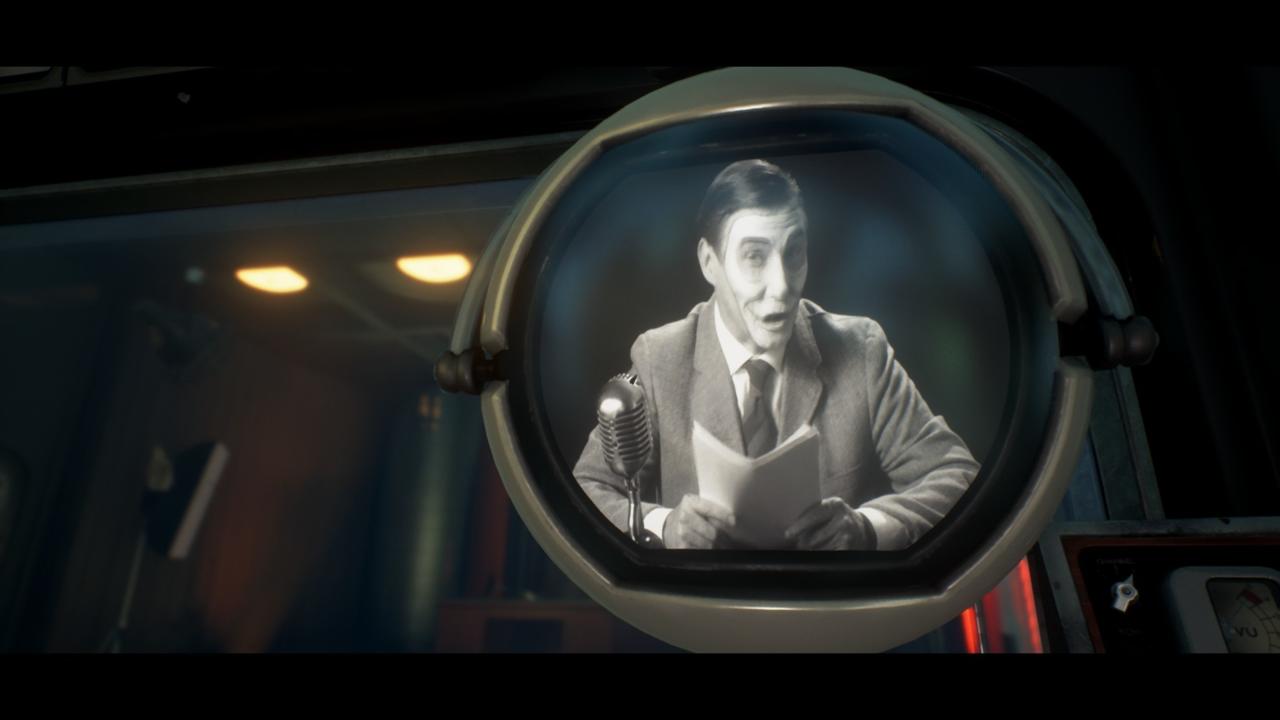










It’s a shame that so many of these systems never fit together in a cohesive way, especially when the world itself is overflowing with potential. There’s some rich environmental storytelling in We Happy Few, even if its visual variety is shallow. It’s striking to transition from dilapidated walls with mad ravings written across them to neatly structured hollows parallel with rainbow roads. The way We Happy Few mixes up its visual representation based on your character’s mental states is clever, too. On Joy you’ll witness double rainbows as far as the eye can see, with a shiny veneer encapsulating the overly cheery nature of your character. Withdrawal sours this into a dreary grey world where the sounds of flies and visions of decay replace usually unremarkable facets of the environment.
This blends well with We Happy Few’s interpretation of the era. Monochrome television screens hang from awnings and play the propaganda-filled ravings of the enigmatic Uncle Jack swing towards you as you pass with a startling red hue. The stretched faces of Wellington Wells‘ most behaved citizens are off-putting in a brilliantly creepy way, even if there’s such a lack of distinct character models that you’ll find multiple identical faces hanging out on a single street corner. Cartoonish robotic contraptions mingle in more strictly secure areas and whistle off cheery tunes as they pass by. They also tend to mess about with the pathfinding for Wellington’s human inhabitants, which is hilarious only the first few times. For everything that We Happy Few gets right in terms of world building, its gameplay leads it astray.
For everything that We Happy Few gets right in terms of world building, its gameplay leads it astray.
Technical issues plague We Happy Few too, ranging from mildly annoying to borderline game-breaking. Characters will often clip through the floor or disappear entirely as you approach. Shifts between night and day see characters appear and disappear from one second to the next. The framerate suffers on capable PC hardware. Quest logs will sometimes not refresh, while getting an item at the wrong time failed to trigger a quest milestone, forcing me to reload an older save. Audio can disappear from cutscenes entirely for long stretches of time. From numerous angles, We Happy Few is in rough shape.
But even if you are able to overlook its technical shortcomings or perhaps wait for more stable patches in the future, We Happy Few’s biggest problems are ones that are hard to remedy. Its entire gameplay loop is underpinned by boring quests and long stretches of inaction. And even when it forces you to interact with its world beyond just walking to waypoints, combat, stealth, and otherwise fascinating societies fail to impose the right balance of challenge and tension. There’s a clear lack of direction that We Happy Few is never able to shake, which wastes its intriguing setting. It does manage to weave each of its three stories cohesively into a larger tale, but it’s also one that’s never critical enough to earn the right to repeat „happiness is a choice“ any chance it can. There are just too many hurdles to overcome to enjoy We Happy Few, and not enough Joy in the world to cast them aside.
Website: LINK

